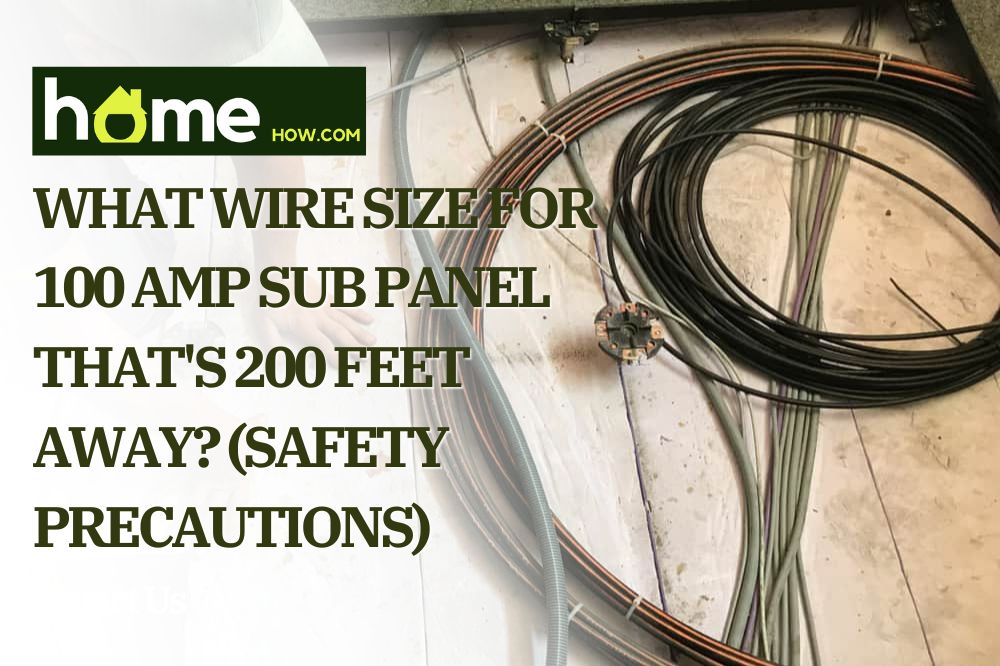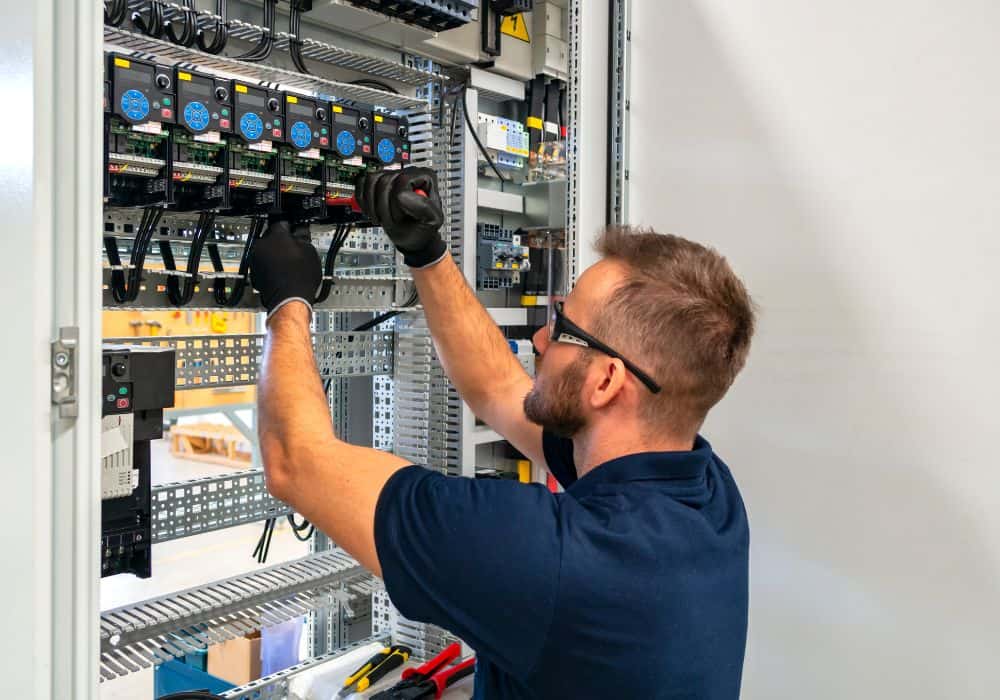Have you ever wondered what wire size for a 100 amp sub panel that’s 200 feet away? It’s an important question as just using any random wire size could lead to some serious issues.
Choosing the correct size of wires for sub-panels is all about safety. But since we’re being specific here, you’ll need a 1-gauge copper wire for your 100 amp sub panel. But aside from knowing the correct wire size, let’s look at other essential elements to this question.
What is an Electrical Sub Panel?
If you’re just starting and aren’t familiar with the whole process, we’re here to help. First up is the electrical sub panel: it’s like a little main panel without a direct connection to the power utility. Instead, it gets power from the primary panel’s current.
If you’re wondering what its purpose is, it’s similar to the main panels. It helps protect your appliances from faulting/shorting.
Also, it has fuses and circuit breakers to find electricity surcharges. From there, it instantly stops currents to prevent instances of fires. But what makes the sub panels different?
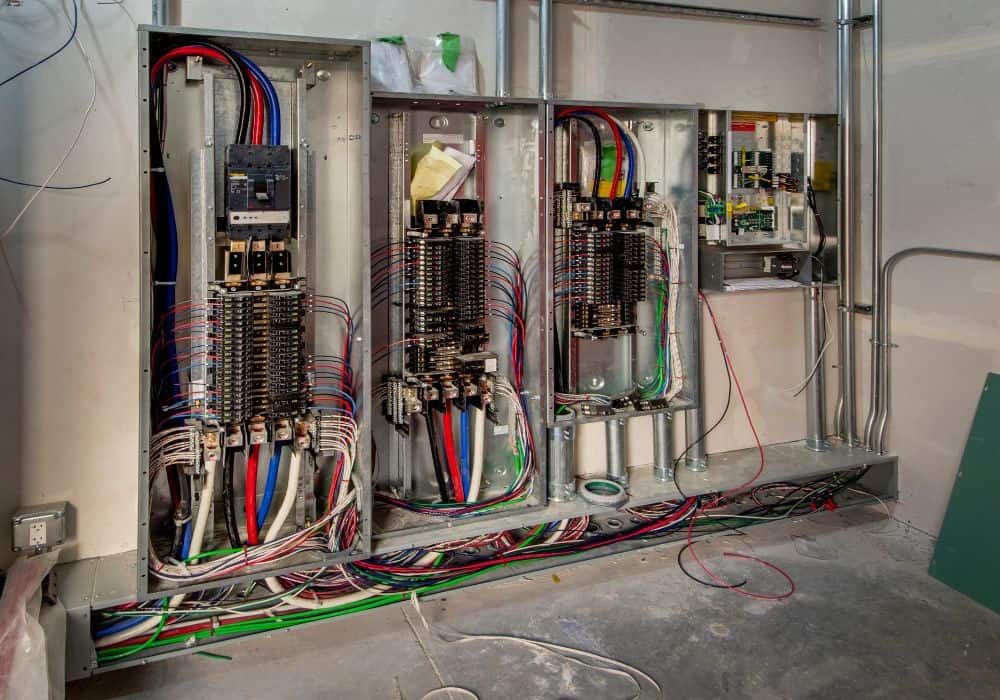
Sub Panels: What Makes Them Different?
Because the main panel powers them, sub-panels are unique elements. Their primary goal is to make it easier for you to manage and organize the electrical circuits in your house.
You can also add a sub panel to prevent the main panel from becoming too crowded. If you think about it, overloading is a serious hazard. However, it can be avoided by distributing sub-panels in different parts of your home.
Additionally, sub-panels can isolate specific spots that have varying power usages. For example, garage workshops have heavy loads on the main panel because of heavy types of machinery. To avoid this, you can set up a separate sub-panel for your garage.
Also, you can isolate the problem area and switch off its sub panel in any fault/short. Simultaneously, the rest of your home can stay powered like usual.
There are two reasons for installing a sub panel, one is you need more room for additional circuits. This is when the main breaker is full. The other is to add a control point for all circuits close to the area they serve.
What is a Gauge?
For the gauge, it’s the diameter of the product that also tells you how much current it can carry and handle. If you’ve visited the electrical section of any hardware shop, you’ll see that the gauge comes in different options.
This is essentially the thickness of the wire but that term isn’t entirely accurate, which is why we say gauge. Some of the numbers you’ll find include 6 and 4. However, you might also see gauges like 3/0, 1/0, or 2/0. These numbers are inversely proportional to diameters, so the higher the number, the smaller its diameter.
If you’re asking if it’s important to get the correct diameter, the answer is yes. The reason is it determines the total current it can handle. If you use the incorrect diameter, it could lead to issues in the long run.
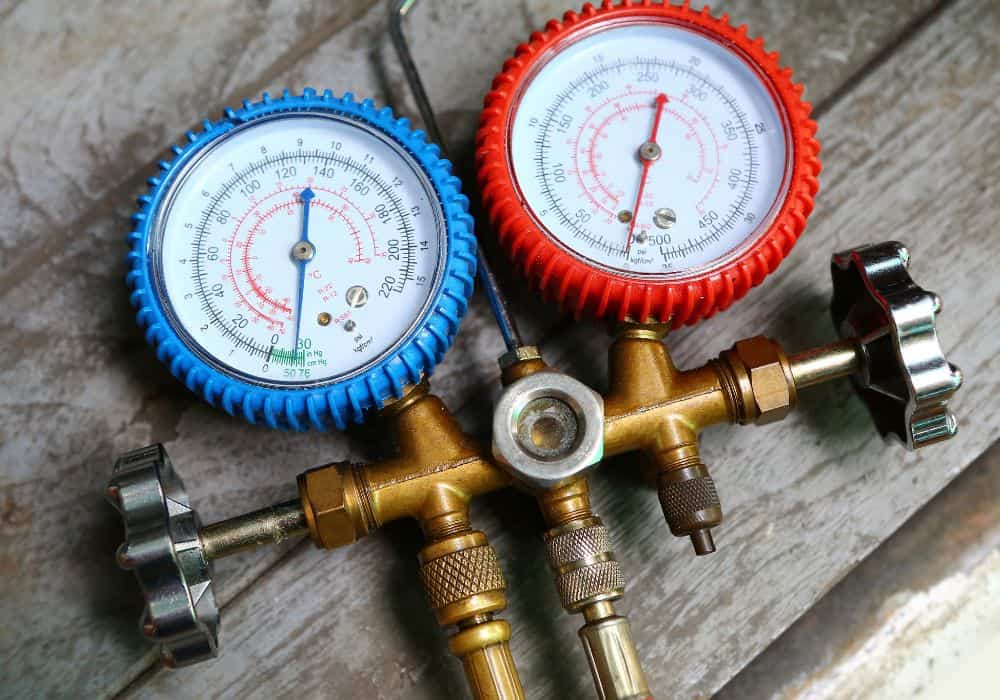
So before choosing which to purchase, it’s best to consider the amount of electrical current it can handle. Do this by determining the devices you’ll use.
The United States, along with 65 other countries, uses AWG for measuring units. In other countries, they utilize the Imperial Standard.
100 Amp Sub Panel with a 200-feet Distance
The length is a key factor when trying to size your electrical wiring. Electrical wires consume current because they have resistance. Since longer wires need more power from the source to reach outlets, there will be more resistance.
With that, when you need wiring for your 100-amp sub panel that’s over 20 feet, consider getting a 1-gauge wire. Also, you can use 1-gauge aluminum or 3-gauge copper for your 100 amp circuits.
Remember, power quality is affected depending on what you go for. So ensure you increase the conductor’s size to reduce/avoid potential voltage drops.
With that, if you end up stuck between different gauge sizes, always remember that bigger is better. If you use a gauge that’s too big, you’ll just have spent more cash than necessary. But if it’s too small, you’ll end up with low-performing circuits. Plus, you’ll also place everyone at serious risk for electrical fires.
The Right Wire Size and Rule of Thumb
Any electrical activity must meet specific criteria. Although it varies for numerous reasons, the consensus among technicians is that 4-gauge copper wires are best for 70 amp circuit breakers. You need a 4-gauge copper wire for an 80 amp, and a 1-gauge wire for a 100 amp service.
For 125 amps, you’ll need to use a 1-gauge copper wire, while 150 amp requires 1/0-sized copper wire. For a 200 amp, you’ll need 250 kcmil-gauge off copper, while a 400 amp requires 600. Lastly, 600 amps will need a 1,500 kcmil-gauge wire.
Remember that these rules of thumb come with limitations like ambient temperature and material.
What Happens When You Choose the Incorrect Gauge?
People often think there will be no electrical issues as long as the wire ends fit a connector. However, it’s not the same for circuit breakers and sub-panels.
Many people are unaware of the effects of using smaller gauges than required to connect circuit breakers and sub-panels. Since they’re clueless about what may happen, they often use smaller gauges than required since these are cheaper. Unfortunately, using the wrong wire size will cost you more in the long run.
It’s always best to choose larger wire gauges since they can handle all the flowing electrical current perfectly. However, although it guarantees your safety, it’s also more expensive and will cost you more upfront. That’s why it’s best to know your sub-panels required and recommended wire size.
Here are the possible effects of using the wrong wire size for your sub-panel.
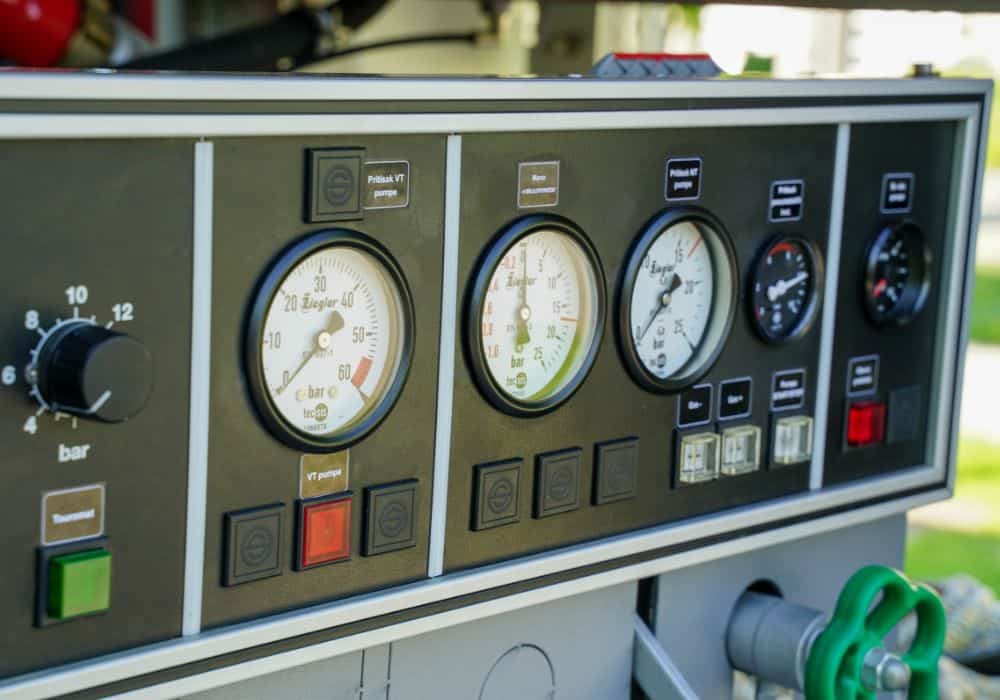
1. Inefficient Performance of Various Devices
A sub-panel with a wire with lower ampacity won’t allow appliances to deliver optimal efficiency. Since the appliances won’t receive enough energy required for peak performance, they will be inefficient.
For instance, a 15 amp circuit breaker for light fixtures at home will require a 14-gauge wire. If you use anything less than the recommended wire size, this could result in performance issues. Due to the high current consumption, electric furnaces will need at least 4-gauge wires.
Always check the requirements of your sub-panel. Any appliances, equipment, or device you connect may fail to deliver optimal performance if you use the wrong wire size. Here are the possible effects of using the wrong wire size for your sub-panel.
2. It Can Cause a Fire that Will Endanger Everyone Around
Using an incorrect wire size and amp rating can cause the wire to burn, leading to an electrical fire. Modern circuit breakers have safety measures like the trip mechanism to cut the current in case of an overload. But sometimes, these may not be enough to prevent a fire.
3. Melted Insulation
A smaller wire gauge has a smaller diameter and can handle less current, so they’re less resistant to energy flow. If the wire you use is too small for your sub panel, it won’t be able to handle the flowing current. High resistance generates heat and results in insulation melting.
4. Damaged Equipment
Aside from performance drop issues and fire risks, a smaller wire size may damage your equipment. Using the wrong wire size will result in an unstable power supply, which may result in busting your equipment.
If you’re lucky, you can still have the damaged equipment fixed. But most of the time, such issues completely wreck these devices.
Safety Precautions to Follow Before Doing Electrical Tasks
It’s a must to prioritize safety when performing electrical work in your home. With that, you must keep some safety precautions in mind to avoid unwanted problems.
Remember to use the appropriate wire size for the given amp. If the wire gauge is too small, it won’t be able to handle their loads safely. This will result in overheating and potential fires.
Aside from using the correct gauge wire, always switch off the power of the service panel. Following safety precautions will reduce the risks of damages, injuries, accidents, and even death. And if you plan to do the electrical work yourself, you’ll need to set a schedule with an electrician for an inspection.
Final Thoughts
Determining the right size of electrical wiring is a common issue among many individuals. But for a 100 amp sub panel, your best bet is a 1-gauge wire if it’s 200 feet away.
Selecting the correct gauge for your project is essential for safety. If the wire gauge is too small, there are high chances of inefficient circuit performance and electrical fires.
For best results, seek a professional for help. It’s always wise to call an electrician since they’re experienced in performing the job safely and adequately.
